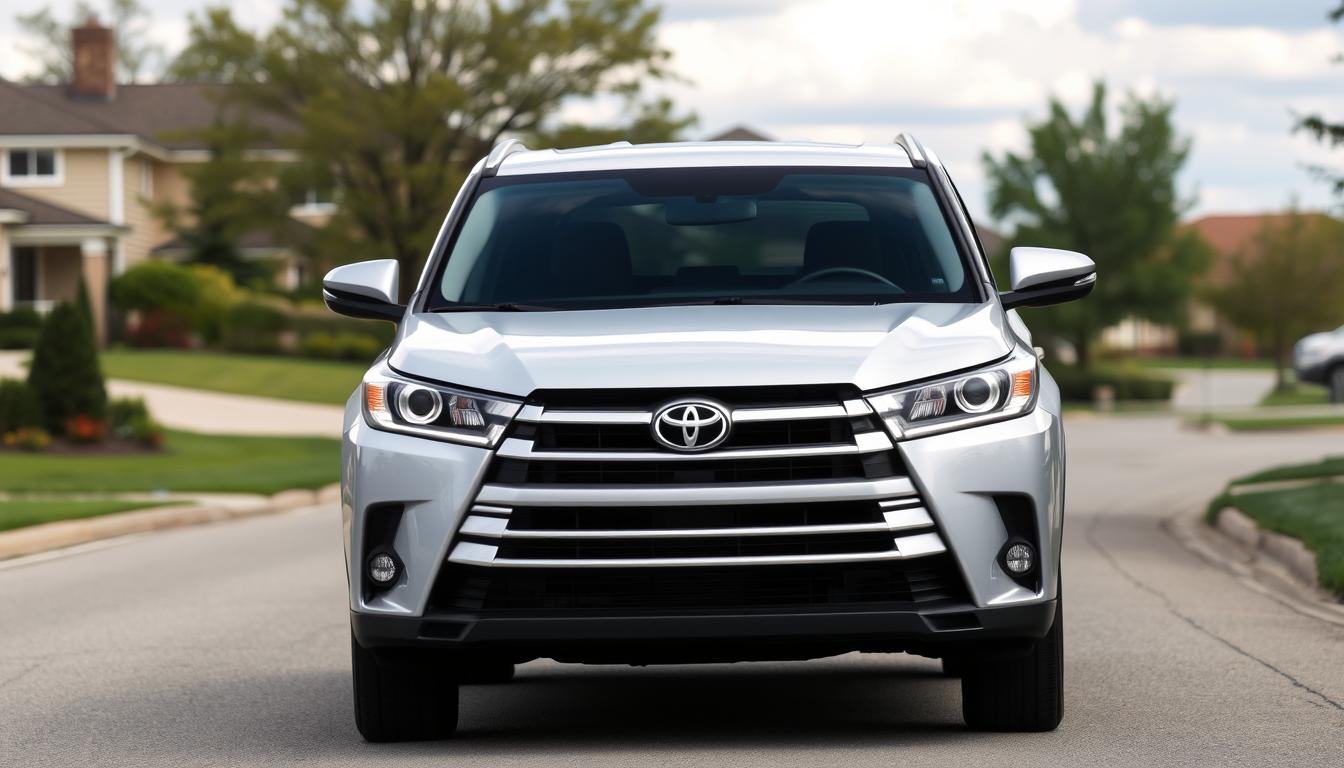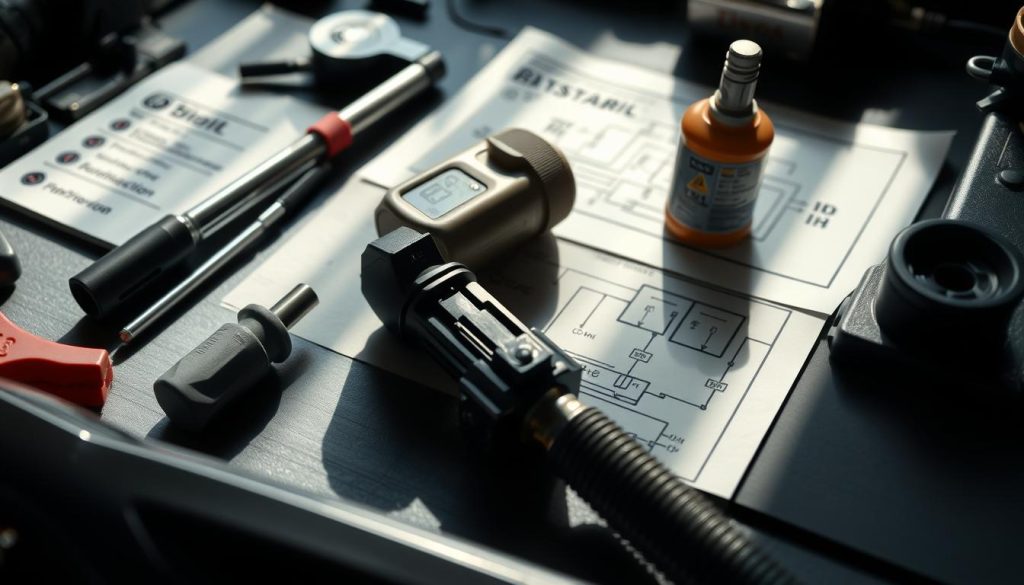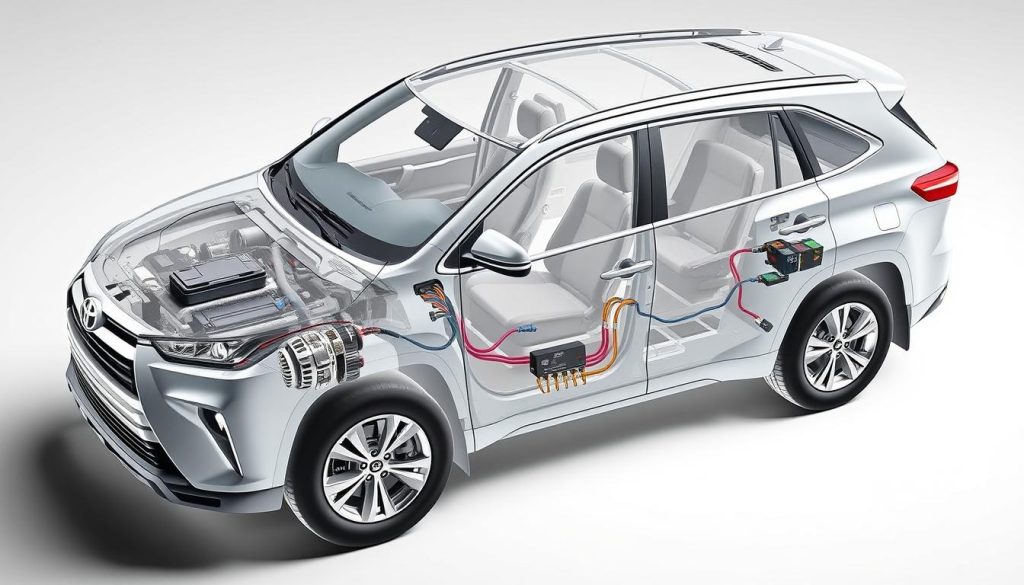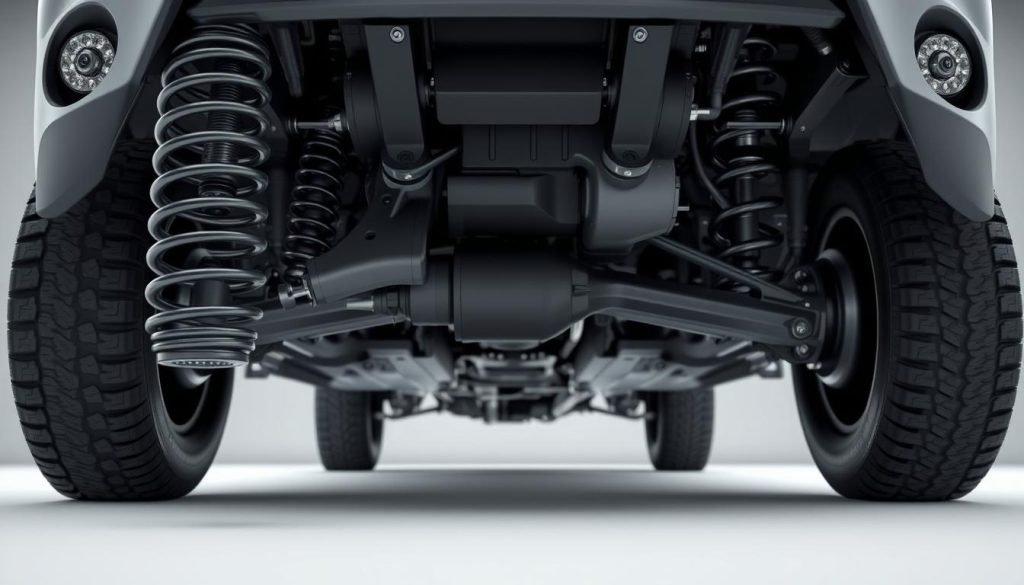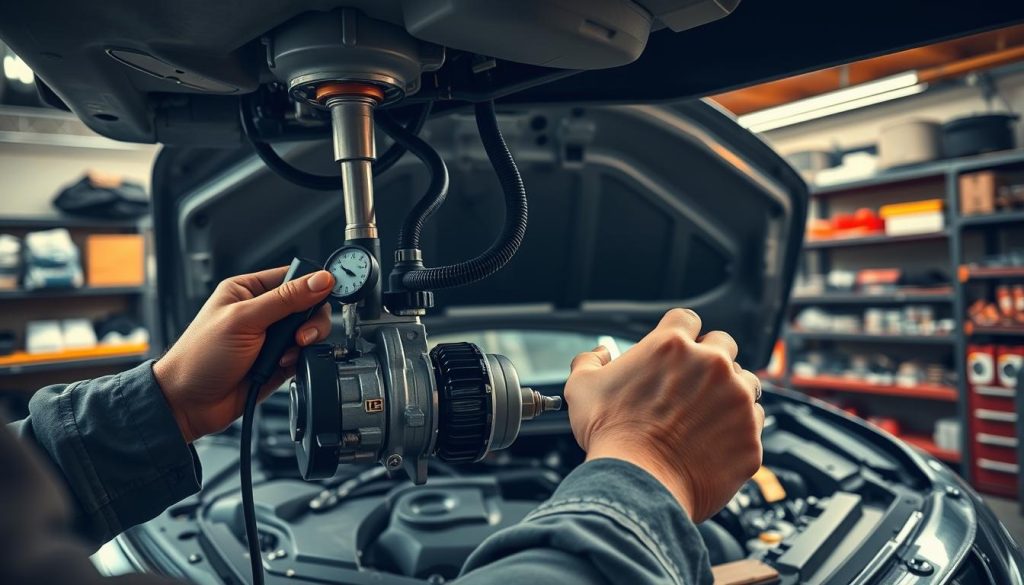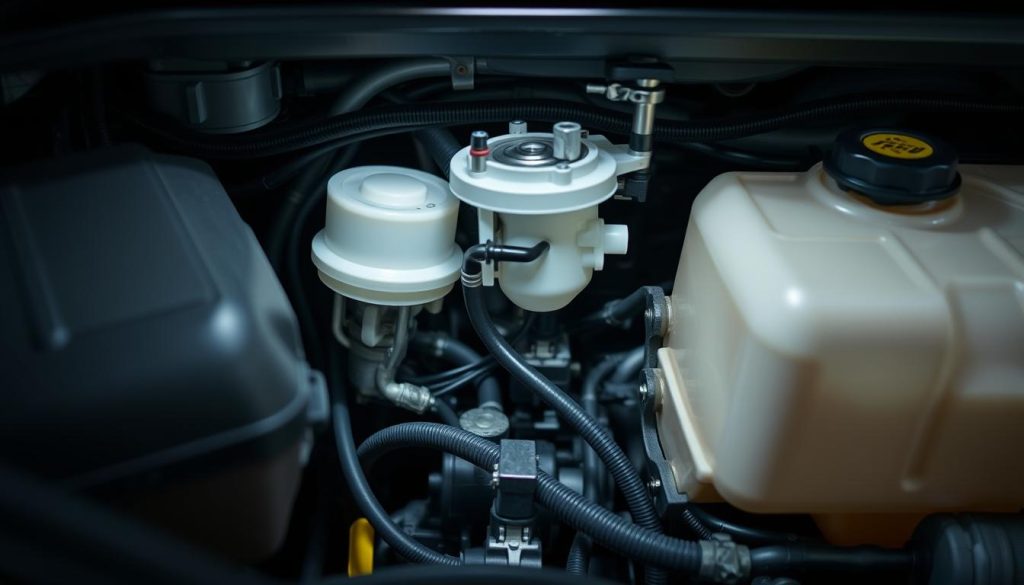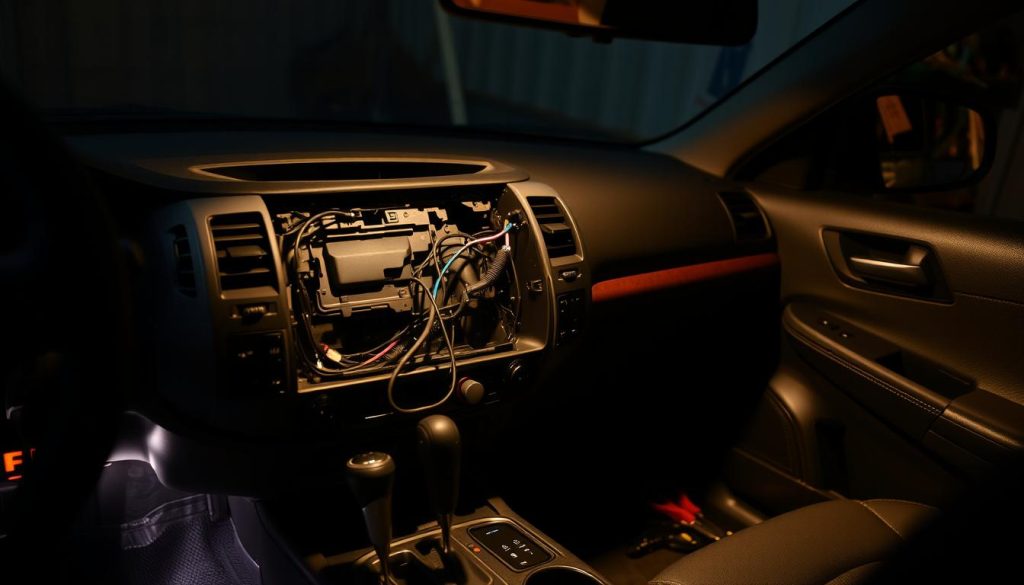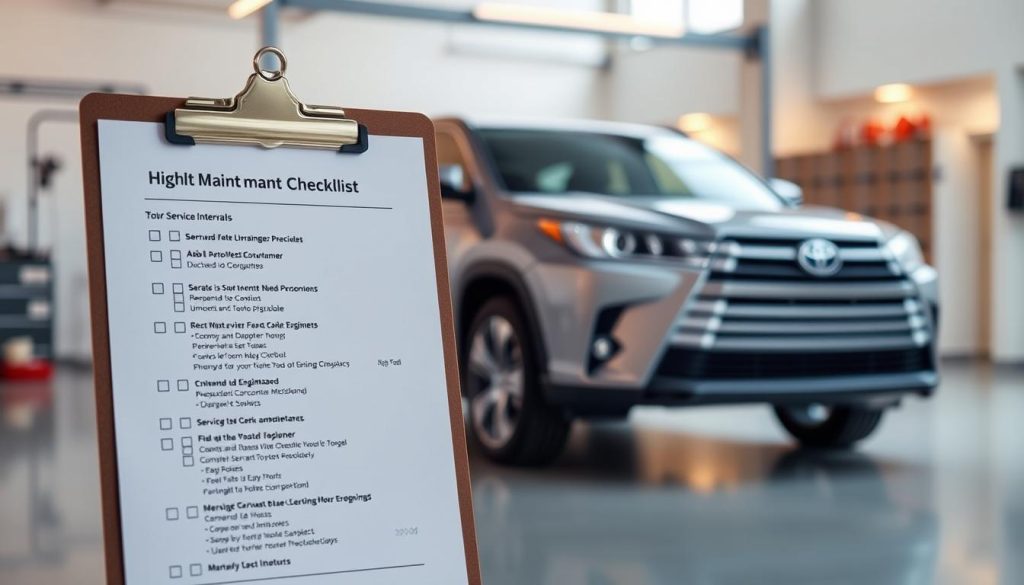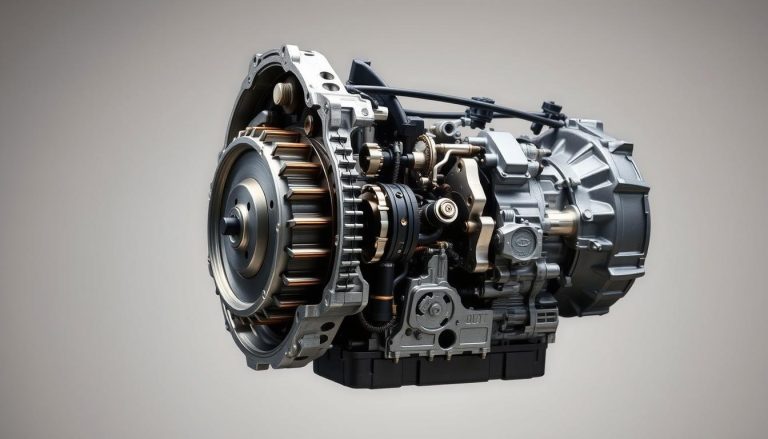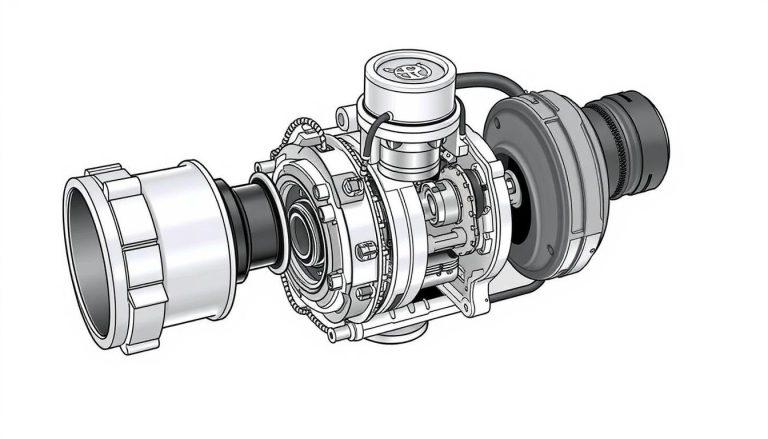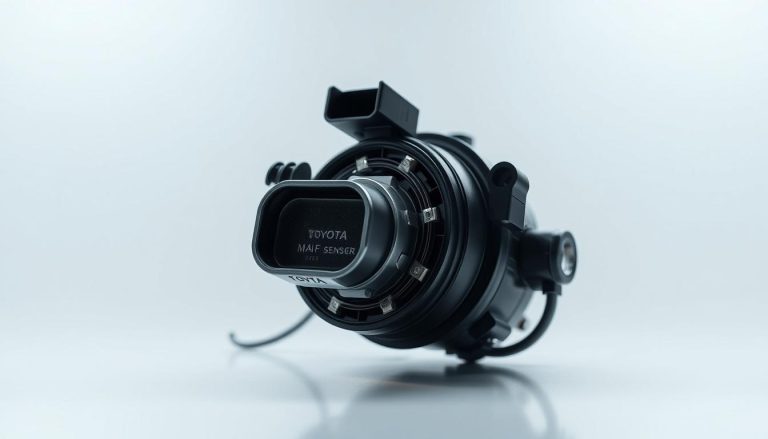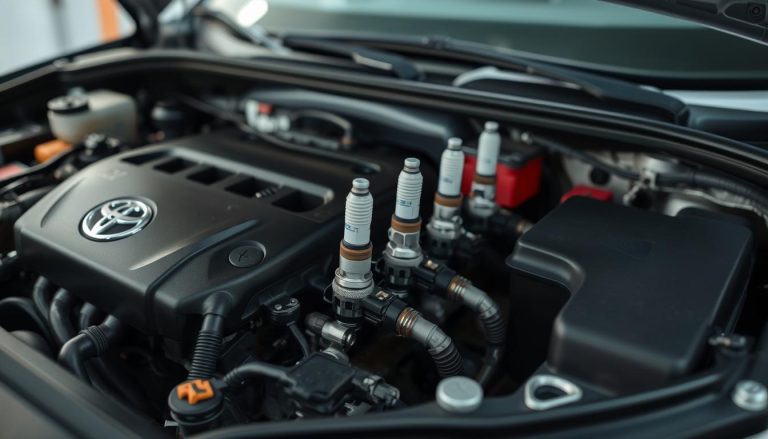Most Common Toyota Highlander Problems Owners Face
Welcome to the essential guide for every Toyota owner. Your mid-size SUV is a symbol of engineering excellence and dependable performance.
Even the most reliable vehicles can face issues over time. Toyota Highlander reliability is strong, but some patterns show up in different model years.
Issues like oil sludge buildup and transmission problems often share symptoms. Knowing these patterns helps you avoid expensive repairs.
This guide covers the most common Toyota SUV problems. We’ll look at early warning signs and how to prevent them. This keeps your vehicle running smoothly.
Early detection saves money and prevents major breakdowns. Regular maintenance and knowing what to watch for are key. They make a big difference in your ownership experience.
Key Takeaways
- Regular maintenance prevents most common SUV issues from becoming expensive repairs
- Oil sludge buildup and transmission concerns are the most frequently reported issues
- Early warning signs help identify problems before they cause breakdowns
- Understanding your vehicle’s common patterns improves long-term reliability
- Proactive care extends your SUV’s lifespan and maintains its value
- Professional inspections catch issues that owners might miss during regular use
Understanding Your Toyota Highlander’s Reliability Profile
Knowing your Toyota Highlander’s reliability helps you take better care of it. Toyota SUV dependability is a top standard in the car world. The Highlander is often seen as one of the most reliable mid-size SUVs out there.
The Highlander reliability rating changes a bit with each new generation. But, all Highlanders are known for their great dependability. The first models (2008-2013) are very durable if you keep them up. The second generation (2014-2019) got even better, with better build and parts.
Regular care can cut down engine failure by up to 70%. This shows why sticking to your Highlander maintenance schedule is key. Toyota’s service plans are made to keep your car running well for a long time.
Compared to rivals like the Honda Pilot and Ford Explorer, the Highlander is more reliable over time. Toyota SUV dependability comes from years of good engineering and quality checks.
Your Highlander’s model year has its own special needs. Older models might need more work on certain parts. But, newer ones have better materials and designs. Knowing these differences helps you spot and fix problems early.
Keeping up with the Highlander maintenance schedule keeps your car reliable and its value high. Well-kept Highlanders can keep 60-70% of their value after five years. This makes them a wise choice for families looking for dependable cars.
How to Identify and Fix Transmission Problems
Your Toyota Highlander’s transmission is key to moving your car. Highlander transmission problems can sneak up on you. This guide will help you spot issues early and avoid costly fixes.
Many Highlanders face transmission troubles, from slight delays to full breakdowns. Catching these early can save you a lot of money and hassle. Regular checks and maintenance are the way to go.
Recognizing Transmission Warning Signs
Spotting early signs of trouble is the first step. Delayed engagement is a common sign. It’s when your car hesitates before moving into drive or reverse.
Listen for odd noises while driving. Grinding, whining, or clunking sounds mean something’s wrong inside. CVT transmission issues often sound like a constant whine or feel like jerking.
Watch how your car shifts gears. If it’s rough, slips, or stays in one gear too long, it’s a sign of trouble. These signs get worse over time.
Checking Transmission Fluid and Components
Checking your transmission fluid is key to keeping it running. Use the dipstick when the engine is warm. Clean, red fluid is good, but dark or smelly fluid needs to be changed.
Feel the fluid between your fingers. Healthy fluid is smooth, but dirty fluid might feel gritty. This simple test can show if something’s wrong inside.
Look for leaks around the transmission pan, cooler lines, and seals. Even small leaks can cause big problems. Fix any leaks you find right away to avoid expensive repairs.
Addressing Common Transmission Issues
Different Highlanders face different transmission problems. CVT transmission issues in newer models might need special fluid and software updates from Toyota.
Older Highlanders with automatic transmissions might need a flush and filter change. But, don’t flush high-mileage transmissions without a pro’s advice, as it can cause more harm.
| Symptom | Likely Cause | Recommended Action | Urgency Level |
|---|---|---|---|
| Delayed engagement | Low fluid or worn clutches | Check fluid, professional diagnosis | Medium |
| Rough shifting | Dirty fluid or valve body issues | Fluid change, system inspection | Medium |
| Slipping gears | Worn bands or clutches | Professional repair required | High |
| No movement | Complete transmission failure | Immediate professional service | Critical |
For small issues like hard shifts, try a transmission fluid additive. But, serious problems need a pro to fix to avoid more damage to your Highlander.
Engine Performance Issues: Detection and Solutions
Knowing how to spot and fix Highlander engine problems helps keep your car running well. It’s key to check your Toyota’s engine often to catch issues early. Many people miss early signs that could stop big problems later.
Toyota Highlanders often face issues like too much oil use, mainly in 2AZ-FE engines. Some models use up to a quart of oil every 1,000 miles. Other common problems include head gasket failures, engine knocking, and timing belt issues.
Monitoring Engine Warning Symptoms
Your engine tells you when something’s wrong through different signs. Listen for odd noises like knocking, ticking, or grinding. These sounds usually mean there’s wear or oil problems inside.
Look out for signs like slower acceleration, rough idling, or stalling. Always check your oil, as some Highlanders use too much. Don’t ignore dashboard lights, like the check engine light.
- Unusual engine noises or vibrations
- Decreased fuel efficiency
- Blue or white exhaust smoke
- Oil spots under your parked vehicle
- Engine overheating or temperature fluctuations
Performing Basic Engine Diagnostics
Begin your Toyota engine diagnostics by checking fluid levels. Make sure oil, coolant, and brake fluid are at the right levels. Low oil can damage your Highlander’s engine.
Use an OBD-II scanner to find trouble codes if the check engine light comes on. Many auto parts stores will read codes for free. Keep a record of any codes and look up what they mean for your Highlander.
Pay attention to how your engine sounds at idle and when you accelerate. Normal engines run smoothly without odd sounds. Check for oil leaks around the valve cover gasket and oil pan, common in older Highlanders.
Implementing Preventive Engine Care
Regular maintenance stops most engine performance issues before they start. Change your oil every 5,000 miles with the right viscosity. Using high-mileage oil can help older engines use less oil.
Replace your air filter every 12,000 miles and fuel filter as needed. Clean your fuel injectors once a year to avoid clogs. Fix VVT-i system problems quickly to avoid timing issues.
Regular maintenance is cheaper than fixing big problems. A well-cared-for Highlander engine can last over 200,000 miles.
Keep an eye on your engine’s performance and fix Highlander engine problems right away. Early action saves money and prevents being stuck on the side of the road.
Electrical System Troubleshooting Guide
Learning to fix your Toyota Highlander’s electrical system is key. It helps you find problems early. Issues can range from simple lights to complex systems. A step-by-step approach helps find and fix the main problem.
Most Highlander electrical problems show warning signs. These signs can appear slowly and seem to come and go. Spotting these signs early can stop bigger problems.
Identifying Electrical Fault Symptoms
Look out for these signs of electrical trouble in your Highlander. Flickering dashboard lights often mean loose wires or failing parts. You might see interior lights dim or headlights not shining as bright.
Power window issues show up as slow or not working at all. You might hear grinding or clicking when trying to move windows. These sounds usually mean motor or wiring problems.
Your infotainment system might freeze, restart, or show error messages. Dashboard display problems include blank screens, distorted images, or touch controls not working. These issues get worse in very hot or cold weather.
Testing Electrical Components
First, check your Highlander’s fuse box for blown fuses or loose connections. Use a multimeter to test voltage at problem spots. Always disconnect the battery first for safety.
Test parts one by one, starting with the easiest ones. Look for damage, corrosion, or loose connections in wiring harnesses. Check areas where wires go through metal or near moving parts.
Make sure ground connections are good, as bad grounding causes many issues. Clean corroded terminals with a wire brush and apply dielectric grease to prevent corrosion.
Resolving Common Electrical Problems
For power window issues, first try lubricating the tracks and checking for blockages. If the motor looks good, replace it if it’s worn out. Most window problems are due to motor failure, not electrical issues.
To fix dashboard display problems, reset the system as your owner’s manual says. Update software if possible. If that doesn’t work, replace the display unit.
Fix damaged wiring harnesses and tighten loose connections with the right connectors. Use only genuine parts to keep your Highlander’s electrical system working well.
Brake System Inspection and Maintenance Steps
Every Toyota Highlander owner should know how to check their brakes. This ensures safe stops and keeps your family safe. Brakes are a key part of your car, so regular brake system maintenance is vital.
Highlanders might face brake problems like worn pads or warped rotors. Some owners hear spongy pedals or grinding sounds. These signs mean you need to act fast.
Checking for Brake Warning Signs
Listen for squeaks or grinding when you brake. A spongy or soft brake pedal could mean brake fluid issues. Or, it might show air in the brake lines.
Feel for vibrations in the steering wheel or pedal. This usually means warped rotors. If your car stops farther away or pulls to one side, it’s a sign of brake wear or caliper trouble.
Check your brake fluid level every month. Look for dark or dirty fluid. Low levels might mean leaks in the brake system.
Inspecting Brake Components
Use a flashlight to see your brake pads through the wheel spokes. They should be at least 1/4 inch thick. If they’re thinner, replace them right away to avoid Highlander brake problems.
Examine your brake rotors for grooves, cracks, or blue color. These signs mean the rotors need a pro to fix or replace them.
By following this brake inspection guide monthly, you can spot issues early. But, if you hear grinding, see warning lights, or feel pedal changes, get help right away. This keeps your family safe on the road.
Suspension and Steering Problem Resolution
Finding and fixing Highlander suspension problems early can save you money and keep you safe. Your Highlander’s suspension and steering work together to keep you comfortable and safe. If they start to fail, you’ll notice changes in how your Highlander drives.
Signs include bouncing after hitting bumps, clunking sounds, or pulling to one side. Uneven tire wear patterns can show suspension issues before you feel them. This guide will help you fix these problems step by step.
Diagnosing Suspension Issues
Begin with a simple bounce test on each corner. Push down on the bumper and release quickly. If it bounces more than once, your struts or shock absorbers need replacing.
Look for signs of wear on suspension parts. Check for oil leaks, cracked bushings, or loose bolts. Uneven tire wear can also suggest alignment or suspension problems.
Testing Steering Components
Test your steering by turning the wheel while parked. If it feels loose or slow, you might have steering issues. While driving slowly, see if the car pulls to one side or if the steering vibrates.
Listen for grinding or clicking when turning, like during parking. These sounds usually mean worn ball joints or tie rod ends that need fixing.
Addressing Common Suspension Problems
Replace struts and shocks in pairs for balanced handling. Faulty bushings need quick attention as they affect many parts. Ball joint replacement is best left to professionals due to safety reasons.
Control arm problems often come with other wear. Fix these issues step by step, starting with the most worn parts. Regular checks every 12,000 miles can prevent costly repairs.
Air Conditioning System Repair Guide
Air conditioning problems in Toyota Highlanders can often be diagnosed and resolved with proper maintenance. Your vehicle’s AC system works hard to keep you comfortable during hot weather. Spotting issues early can save you money and prevent complete system failure.
Common signs of AC trouble include weak airflow, warm air from vents, and unusual noises. Strange odors or visible refrigerant leaks also indicate problems that need attention. Regular inspection helps catch these issues before they become expensive repairs.
Diagnosing AC Performance Issues
Start your air conditioning repair process by checking the basics. Turn on your AC and feel the air temperature at different fan speeds. Weak cooling or inconsistent temperatures often point to refrigerant problems or compressor issues.
Listen for unusual sounds like grinding, squealing, or clicking noises. These sounds can indicate worn belts, failing compressors, or electrical problems. Check your cabin air filter location and inspect it for dirt or debris that blocks airflow.
Basic AC System Maintenance
Effective AC system maintenance starts with replacing your cabin air filter every 12,000 miles. A clean filter improves airflow and prevents strain on your system. This simple step can prevent many common cooling problems.
Inspect visible AC components under the hood for signs of wear or leaks. Look for oily residue around connections, which indicates refrigerant leaks. Run your AC system monthly, even in winter, to keep seals and components lubricated and functioning properly.
Most Common Toyota Highlander Problems by Generation
Toyota Highlander problems vary by model year, showing different patterns. Knowing these model year issues helps with maintenance and repairs. Each generation has its own engineering changes that affect reliability.
Understanding your Highlander’s generation can save you money and time. Most issues follow predictable timelines based on when certain parts fail. This knowledge helps you prevent big problems before they start.
2008-2013 First Generation Issues and Solutions
The first-generation Highlander has several common problems. Transmission problems are a big issue, with many vehicles experiencing rough shifting around 150,000 miles. The transmission fluid often breaks down faster than expected.
Oil consumption is a problem in many first-generation models after 100,000 miles. Engine seals and gaskets often leak, needing regular checks. The power steering system also has issues, with pump failures happening often.
Electrical system quirks include dashboard warning lights that light up without clear reasons. Window regulators fail regularly, mostly on rear windows. These model year issues need attention but are manageable with proper care.
2014-2019 Second Generation Problems
The second-generation Highlanders brought new challenges but also improved reliability in some areas. The CVT transmission system caused different problems than earlier models. Some owners report hesitation during acceleration and unusual noises from the transmission.
Highlander recall information shows fuel pump failures affected many 2014-2019 models. This recall addressed sudden engine stalling that could create safety hazards. Toyota replaced affected fuel pumps at no cost to owners.
Air conditioning systems in this generation show premature compressor failures. The electrical system improved significantly, but some models experience battery drain issues. Suspension components wear faster than expected on vehicles used for frequent towing.
2020-Present Third Generation Concerns
The newest Toyota Highlander generation shows fewer problems but has some emerging patterns. Early reports indicate issues with the infotainment system freezing or restarting unexpectedly. Software updates often fix these problems.
Some owners report minor transmission hesitation during cold weather starts. The hybrid system in applicable models shows excellent reliability so far. Highlander recall information for this generation remains limited due to the newer design.
Paint quality concerns have emerged on some 2020-2022 models, with premature fading reported. The advanced safety systems occasionally need recalibration after windshield replacement. Overall, this generation shows Toyota’s continued improvement in addressing Highlander generation problems.
| Generation | Years | Top Problem | Average Repair Cost |
|---|---|---|---|
| First | 2008-2013 | Transmission Issues | $3,200-$4,500 |
| Second | 2014-2019 | Fuel Pump Recall | $0 (Covered) |
| Third | 2020-Present | Infotainment Glitches | $200-$800 |
Fuel System Diagnostics and Efficiency Improvements
Fuel system problems in your Highlander can hurt your wallet and performance. A good fuel system keeps your car running smoothly and saves fuel. Issues like starting troubles, rough idling, or poor performance are common signs.
Toyota recalled some Highlanders for fuel pump issues. These problems could stall the engine or make starting hard. This recall shows how important it is to check and maintain your fuel system regularly.
Identifying Fuel System Problems
Watch for signs like hard starting, which often means fuel delivery issues. Listen for strange noises from the fuel tank area. These sounds might mean the pump is failing.
Look out for rough idling or engine misfires when you accelerate. These signs usually point to fuel injector problems or dirty fuel. Also, a sudden drop in fuel economy means your fuel system isn’t working right.
Engine stalling, often at idle or when you accelerate, is a serious problem. It needs quick attention to avoid being stuck on the road.
Optimizing Fuel System Performance
Regular maintenance can stop most Highlander fuel system problems before they cost a lot. Change your fuel filter as Toyota suggests to keep fuel clean for your engine.
Use high-quality fuel from trusted stations to avoid contamination. Also, think about getting your fuel injectors cleaned to keep them working well.
By making these fuel efficiency improvements, your Highlander will run better. Always keep your fuel tank at least a quarter full. This helps prevent pump overheating and makes it last longer.
Interior and Exterior Component Problem Solutions
Problems with your Highlander’s interior and exterior accessories can really affect your drive. These Highlander interior problems and exterior component issues might not stop the car from running. But they can make your ride less comfortable and less convenient.
These issues often start small and can get really annoying. Knowing how to find and fix these problems helps keep your car running well. It also helps you save money on repairs.
Addressing Interior Component Failures
Power window motors in Toyota Highlanders can fail, making windows slow or not work at all. First, check the window switch and fuse. You might not need to replace the motor.
Dashboard display problems, like flickering screens or controls that freeze, often come from loose wires or bad display units. Try unplugging the battery for ten minutes to see if it resets the system.
Climate control issues, like stuck blend doors or controls that don’t work, might be due to blown fuses. Seat adjustments can fail because of worn motors or damaged switches.
Fixing Exterior Component Issues
Lighting problems, from dead bulbs to bad wiring, can be a big issue. LED headlights might need to be replaced, not just the bulbs. Door handles, both inside and out, can break, making them hard to use.
Power mirror issues, like motors not working or adjustment switches breaking, can be a real problem. Side mirror heating elements can also fail, causing fogging in cold weather. These accessory repairs usually need a pro to fix right.
| Component Type | Common Problems | DIY Difficulty | Average Repair Cost |
|---|---|---|---|
| Power Windows | Slow operation, complete failure | Moderate | $150-$400 |
| Dashboard Display | Flickering, frozen screen | Easy | $200-$600 |
| Door Handles | Breaking, sticking | Moderate | $100-$250 |
| Power Mirrors | Motor failure, heating issues | Difficult | $200-$500 |
Creating Your Preventive Maintenance Schedule
Creating a detailed maintenance schedule keeps your Highlander in top shape for years. Regular upkeep can cut engine failure risk by up to 70%. A good preventive maintenance guide helps spot small issues before they cost a lot.
Stick to Toyota’s maintenance schedule and do simple tasks like oil changes to save money. Fluid checks can stop expensive repairs later. Planning ahead makes owning a vehicle cheaper and less stressful.
Establishing Regular Inspection Routines
Monthly checks are key to good vehicle care. Check engine oil, coolant, and brake fluid levels. Also, look for leaks under your car.
Seasonal checks are important for weather changes. Check tire pressure and tread. Test lights, wipers, and battery connections. These quick steps prevent big problems.
Regular visual checks spot issues early. Look for unusual wear, loose belts, or corrosion. Trust your senses – odd noises, smells, or vibrations mean trouble.
Following Recommended Service Intervals
Toyota service intervals guide you on vehicle care. Your owner’s manual outlines specific mileage or time-based needs. Oil changes usually happen every 5,000 to 10,000 miles, based on how you drive.
Driving in harsh conditions means more frequent service. Stop-and-go traffic, extreme weather, and dusty areas wear out your car faster. Adjust your maintenance schedule to fit your driving habits.
Tracking Maintenance Records
Keeping detailed records protects your investment and warranty. Save receipts for all services, repairs, and parts. Digital apps make tracking easy and convenient.
Maintenance logs show your car’s history. They boost resale value by showing proper care. Organized records make warranty claims easier and help mechanics solve recurring problems.
Determining When to DIY vs Seek Professional Help
Deciding whether to do DIY Highlander repairs or get a pro can save you money and avoid mistakes. It’s all about knowing your skills, tools, and the repair’s complexity.
Choosing wrong can lead to big costs or safety risks. Some jobs are great for DIY fans, but others need professional automotive service from experts.
Assessing Your Skill Level and Tools
First, check your mechanical skills and tools. Simple tasks like oil changes and air filter swaps need little experience and tools.
Also, think about your workspace. Do you have a flat area, good lighting, and safety gear? Advanced repairs often need special tools that are pricey.
How comfortable are you with electrical and computer systems? If you’re new to car repairs, start with easy tasks and learn more.
Identifying Problems Requiring Professional Service
Some Highlander issues need a pro’s touch. Brakes, airbags, and steering systems are too critical for DIY.
Transmission, engine, and complex electrical problems also need special tools and knowledge. Trying these without the right skills can make things worse.
| Repair Type | DIY Friendly | Professional Required | Risk Level |
|---|---|---|---|
| Oil Change | Yes | No | Low |
| Brake Repair | No | Yes | High |
| Air Filter | Yes | No | Low |
| Transmission Work | No | Yes | High |
This repair decision guide helps you weigh cost savings against safety. If unsure, get a pro’s estimate before tackling tough repairs yourself.
Conclusion
Staying ahead of issues makes owning a Toyota Highlander easier. This guide helps you spot problems early and fix them before they cost a lot.
The Highlander is known for being reliable for families. By following maintenance schedules and acting on warning signs, your SUV stays strong for years. Having trusted mechanics on hand is also key for complex repairs.
Keep this guide close for quick reference. Use it when you notice unusual sounds, lights, or changes in how your SUV drives. These tips work best when done regularly.
Spotting problems early saves money and avoids breakdowns. Simple steps like checking fluids, listening for odd noises, and watching dashboard warnings help a lot. Your routine maintenance keeps your SUV in top shape and your family safe.
Being proactive with your Highlander’s care is key for a happy family. You now know how to keep your SUV in great condition and when to call for help. Smart ownership means staying informed and enjoying the peace of mind that comes with a well-maintained SUV.
FAQ
What are the most common Toyota Highlander problems that owners should watch for?
Toyota Highlander owners should watch out for transmission issues, like CVT problems in newer models. Also, engine oil consumption in certain years is common. Electrical glitches can affect infotainment and power accessories. Premature brake wear and fuel pump failures leading to recalls are also issues.
While the Highlander is generally reliable, knowing these problems helps owners stay proactive. Catching issues early is key.
How reliable is the Toyota Highlander compared to other mid-size SUVs?
The Toyota Highlander is among the most reliable mid-size SUVs. It has above-average dependability ratings from J.D. Power and Consumer Reports. With proper maintenance, Highlanders can easily reach 200,000+ miles.
Reliability varies by generation. The 2014-2019 models have more transmission-related issues than the first and third generations.
What are the early warning signs of transmission problems in a Toyota Highlander?
Early signs of transmission problems include delayed engagement and rough shifting. Unusual noises, slipping gears, and fluid leaks are also warning signs. The check engine light appearing on the dashboard is another indicator.
If you notice these symptoms, check your transmission fluid immediately. Consider professional diagnosis if needed.
How often should I check my Toyota Highlander’s transmission fluid?
Check your Highlander’s transmission fluid monthly or every 1,000 miles. The fluid should be bright red and smell slightly sweet. If it’s dark or smells burnt, it needs attention.
Many newer Highlanders have sealed transmissions. Consult your owner’s manual for specific checking procedures.
What engine problems are most common in Toyota Highlanders?
Common engine problems include excessive oil consumption in 2008-2010 models. Carbon buildup on intake valves and timing chain stretch in high-mileage vehicles are also issues. VVT-i system problems and coolant leaks are other common problems.
Regular oil changes and using Toyota-recommended oil grades can prevent many of these issues.
How can I tell if my Highlander has electrical system problems?
Electrical problems include flickering dashboard lights and a non-responsive infotainment system. Power windows that move slowly or stop working and intermittent air conditioning are also signs. Dead battery despite recent replacement and multiple warning lights are other indicators.
Start troubleshooting by checking fuses and connections. If problems persist, seek professional help.
What should I do if my Toyota Highlander’s brakes are making noise?
Squealing or grinding noises mean worn brake pads that need replacement. Stop driving if you hear metal-on-metal grinding. Other signs include a soft brake pedal and vibrations when braking.
Highlander hybrid models may experience brake booster issues. These require professional attention.
How do I know if my Highlander has suspension problems?
Suspension problems cause excessive bouncing after hitting bumps and uneven tire wear. Nose diving when braking and swaying during turns are also signs. Knocking noises from the wheels indicate issues.
Check for leaking shock absorbers and worn strut mounts. These problems affect safety and should be addressed promptly.
Why isn’t my Toyota Highlander’s air conditioning cooling properly?
Poor AC performance can be due to a dirty cabin air filter or low refrigerant levels. A blocked condenser or failing compressor can also cause issues. Start by replacing the cabin air filter and ensuring vents are clear.
If problems persist, professional diagnosis is needed to check refrigerant levels and system components.
Which Toyota Highlander model years have the most problems?
The 2008-2010 models had significant oil consumption issues. CVT transmission problems and fuel pump recalls affected 2014-2019 models. The 2011-2013 and 2020-present models are generally more reliable.
Always research specific model year issues before purchasing. Ensure any recalls have been completed.
How can I improve my Toyota Highlander’s fuel efficiency?
Improve fuel efficiency by maintaining proper tire pressure and replacing dirty air filters. Use quality fuel with the recommended octane rating. Regular maintenance and avoiding excessive idling also help.
Address fuel system problems promptly. The fuel pump recall affected many Highlanders, so ensure this has been completed on your vehicle.
What interior problems are common in Toyota Highlanders?
Common interior issues include power window failures and dashboard display problems. Climate control malfunctions and seat adjustment motor failures are also common. Interior trim pieces becoming loose and infotainment system freezing are other issues.
Many of these are electrical problems. They may be covered under extended warranties or technical service bulletins.
How often should I service my Toyota Highlander?
Follow Toyota’s recommended maintenance schedule. Oil changes every 5,000-10,000 miles (depending on oil type) and tire rotations every 5,000 miles are essential. Brake inspections every 10,000 miles and major services every 30,000 miles are also necessary.
Severe driving conditions may require more frequent service. Keep detailed maintenance records for warranty and resale value.
Which Toyota Highlander repairs should I never attempt myself?
Never attempt brake system repairs, airbag system work, transmission rebuilds, or engine timing chain replacement. Hybrid system repairs and electrical work involving airbags are also not recommended. These are safety-critical systems requiring professional expertise and specialized tools.
Attempting these repairs can cause serious injury or expensive damage.
Is the Toyota Highlander worth buying used?
Yes, used Highlanders are excellent choices when properly maintained. Look for complete maintenance records, no accident history, completed recalls, and evidence of regular oil changes. Avoid 2008-2010 models with oil consumption issues and 2014-2019 models without CVT transmission service history.
Pre-purchase inspections by qualified technicians are highly recommended.

